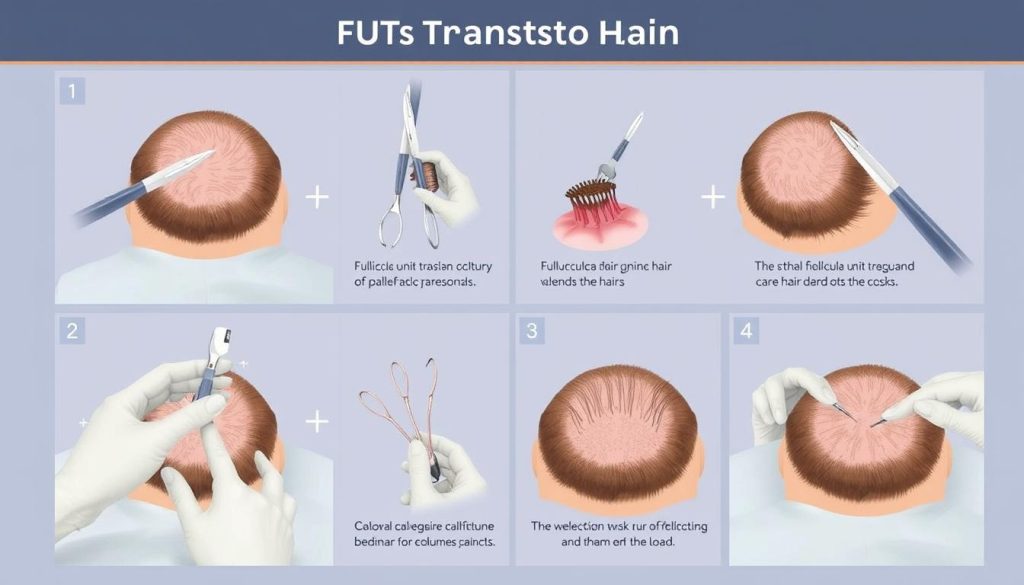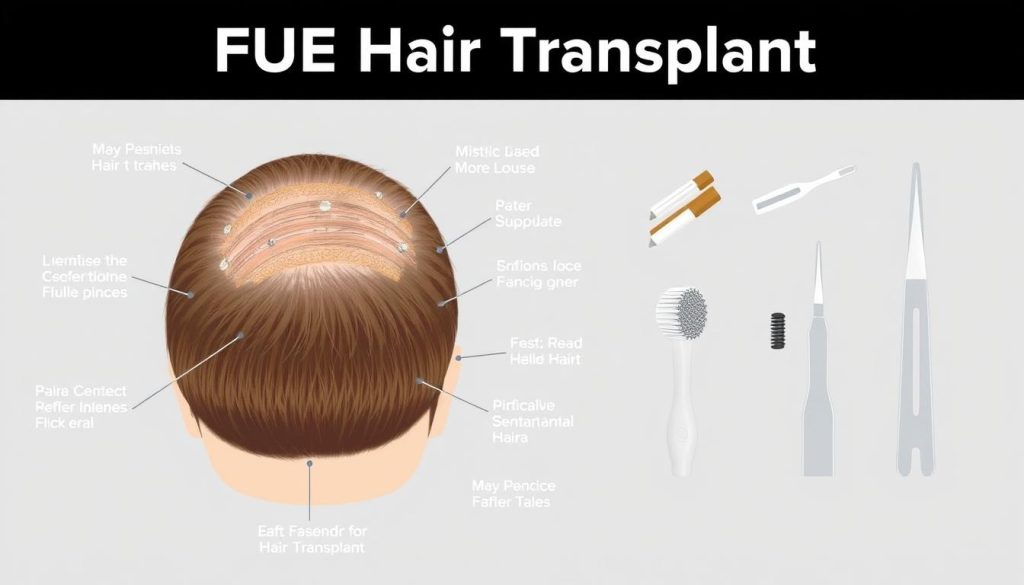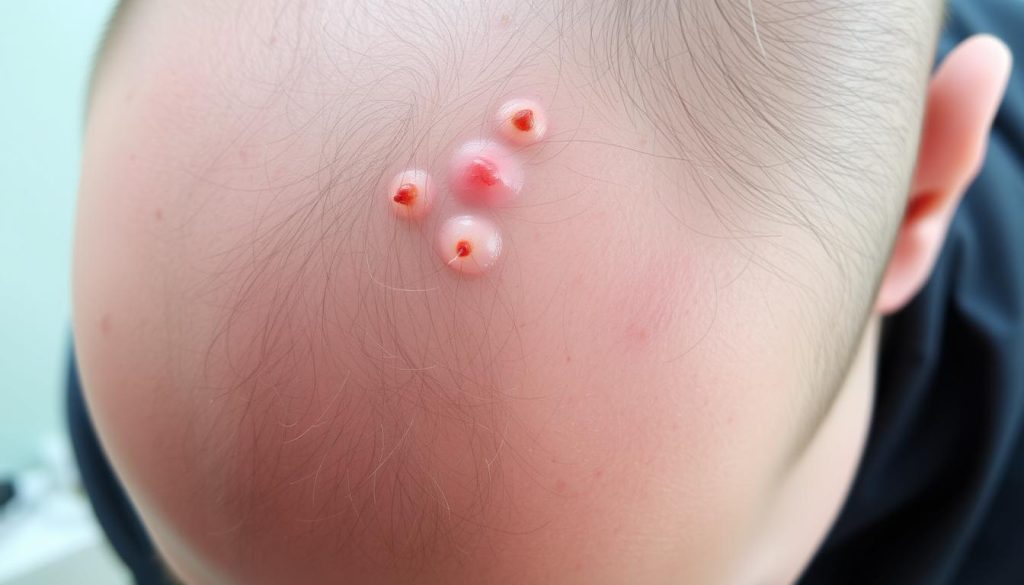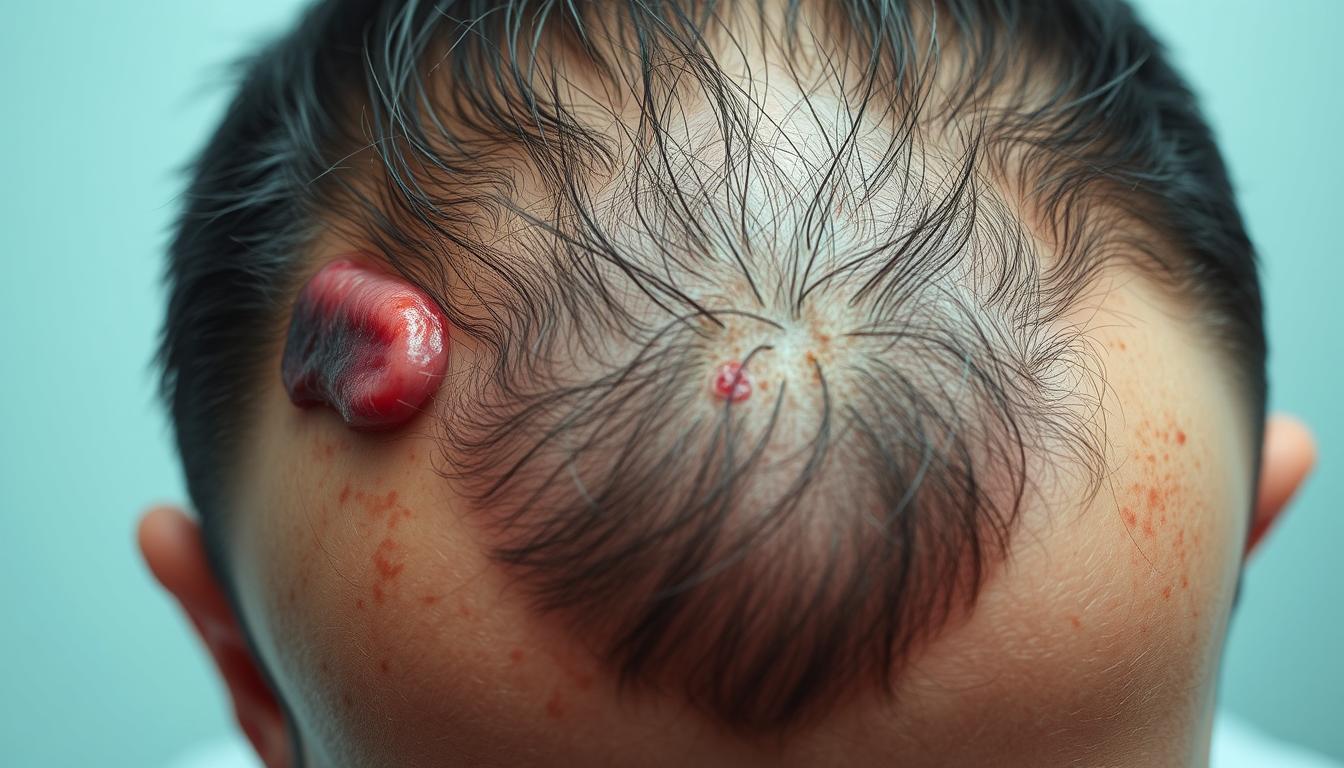Hair transplants have become a popular solution for individuals experiencing hair loss. The procedure involves relocating hair from thicker areas of the scalp to balding or thinning sections.
While generally considered safe, hair transplant procedures carry potential risks and complications. Understanding these risks is crucial for making an informed decision.
A 2017 study found that between 10% to 80% of transplanted hair grows back within three to four months. However, it’s essential to be aware of the possible side effects associated with the transplant procedure.
Key Takeaways
- Understanding the risks involved in hair transplantation is crucial for making an informed decision.
- Hair transplant procedures carry potential risks and complications.
- The recovery process and outcomes can vary significantly among individuals.
- Recognizing warning signs of complications is vital during the recovery period.
- Minimizing risks requires careful consideration and planning.
Understanding Hair Transplant Procedures
Understanding the different methods of hair transplantation is crucial for potential patients. Hair transplantation involves relocating hair follicles from a donor area to a recipient site.
Follicular Unit Transplantation (FUT)
Follicular Unit Transplantation (FUT) is a hair transplant technique where a strip of scalp is removed from the back of the head. The removed strip is then dissected into individual follicles for transplant.

Follicular Unit Extraction (FUE)
Follicular Unit Extraction (FUE) is a more modern hair transplant technique. It involves extracting individual hair follicles directly from the donor area without removing a strip of tissue. During an FUE procedure, the surgeon uses a micro-punch tool to extract follicles one by one.
FUE is less invasive than FUT, resulting in less post-operative pain and quicker recovery. It allows for greater flexibility in harvesting follicles from various donor sites.

Common Hair Transplant Side Effects
Understanding the potential side effects of hair transplant surgery is crucial for managing expectations and ensuring a smooth recovery. While generally considered safe, hair transplant procedures can result in several common side effects.
Swelling and Inflammation
Swelling and inflammation are typical after a transplant. These symptoms usually subside within a few days. Applying ice packs can help reduce swelling.
Pain and Discomfort
Patients may experience pain and discomfort after the procedure. This can be managed with pain medication prescribed by the surgeon.
Bleeding and Scabbing
Bleeding and scabbing are normal after a hair transplant. Minor bleeding may occur for a few hours post-surgery. Scabbing forms around the grafts as part of the healing process. It’s essential to avoid picking at scabs to prevent infection and ensure proper healing.
| Side Effect | Description | Duration |
|---|---|---|
| Swelling and Inflammation | Common reaction to surgery | Few days |
| Pain and Discomfort | Post-operative pain | Variable |
| Bleeding and Scabbing | Normal physiological response | 1-3 weeks |
Post-Procedure Recovery Timeline
Understanding the recovery process is crucial for patients undergoing hair transplant surgery. The journey to full recovery and optimal results involves several stages.
First 48 Hours After Surgery
The initial 48 hours are critical for the healing process. Patients are advised to follow their surgeon’s instructions carefully to minimize complications and ensure a smooth recovery.
First Week of Recovery
During the first week, patients may experience swelling, redness, and scabbing. These symptoms typically subside within a few days, and most external signs of the procedure resolve within 2-4 weeks.
Long-term Healing Process
The healing process extends beyond the initial recovery, with full results visible after 12-18 months. New hair growth begins around 3-4 months, with continued improvement in density and texture through the first year.
- Around 2-4 weeks post-surgery, most external signs have resolved.
- New hair growth typically begins around months 3-4.
- Complete maturation of transplanted follicles takes 12-18 months.
Temporary Side Effects
Following a hair transplant, it’s common for patients to encounter temporary side effects that are part of the healing process. These effects are generally short-lived and subside as the scalp recovers.
Shock Loss
Shock loss refers to the shedding of existing hair in the recipient area following a hair transplant. This phenomenon is a temporary condition and is considered a normal part of the post-transplant process. The hair typically regrows within a few months.
Numbness and Tingling
Numbness and tingling sensations are common temporary side effects after a hair transplant. These sensations occur due to the manipulation of the scalp during surgery and usually resolve on their own within a few weeks.
Itching and Redness
Itching and redness are among the most common temporary side effects following hair transplant surgery. Itching results from the natural healing process and the formation of scabs around the transplanted follicles. Redness occurs due to increased blood flow to the transplanted areas and the inflammatory response to surgical trauma. Patients are advised to resist scratching to avoid dislodging grafts.
| Side Effect | Description | Duration |
|---|---|---|
| Shock Loss | Shedding of existing hair | A few months |
| Numbness/Tingling | Sensory changes due to surgery | A few weeks |
| Itching/Redness | Healing response and inflammation | 2-3 weeks |

Long-Term Hair Transplant Side Effects
While hair transplant procedures are generally safe, there are potential long-term side effects to consider. Understanding these risks is crucial for individuals contemplating this surgery.
Scarring
One of the long-term side effects of hair transplant surgery is scarring. The extent of scarring can vary depending on the technique used, with Follicular Unit Extraction (FUE) typically resulting in less noticeable scarring compared to Follicular Unit Transplantation (FUT). However, the skill of the surgeon plays a significant role in minimizing scarring.
Uneven Hair Growth
Uneven hair growth is another potential long-term side effect. Transplanted hair may grow at different rates, causing temporary unevenness. This usually normalizes over 6-12 months. Factors contributing to uneven growth include inconsistent graft survival rates and improper implantation techniques. A skilled surgeon can mitigate these issues by creating natural-looking hairlines and ensuring consistent density.
| Causes of Uneven Hair Growth | Effects | Prevention |
|---|---|---|
| Inconsistent graft survival rates | Patchy or inconsistent appearance | Proper graft handling and implantation |
| Improper angle or depth of implantation | Unnatural-looking hair growth | Artistic skill of the surgeon |
Potential Serious Complications
While hair transplantation is generally considered safe, there are potential serious complications that patients should be aware of. These complications can arise during or after the procedure, and understanding them is crucial for making an informed decision.
Infections
Infections are a serious complication that can occur after a hair transplant. Bacterial infections are the most common type, and they can be treated with antibiotics. However, if left untreated, infections can lead to more severe consequences.
Cyst Formation
Cysts can form at the site of the transplanted hair follicles, leading to inflammation and potentially causing scarring. Proper wound care and post-operative follow-up can minimize the risk of cyst formation.
Allergic Reactions
Allergic reactions to the local anesthetic or medications prescribed during the recovery period are rare but can be severe. Symptoms include itching, swelling, and difficulty breathing. Patients should inform their surgeon of any known allergies and report any symptoms promptly.
- Allergic reactions can range from mild skin irritation to life-threatening anaphylaxis.
- Symptoms of allergic reactions include rash, hives, itching, swelling, and respiratory issues.
- Patients with known allergies should discuss their history with their surgeon before the procedure.
Psychological Effects
The journey of hair transplantation is not just physical but also emotionally taxing. Patients may experience a range of psychological effects, from dissatisfaction with the results to more serious issues like depression and anxiety.
Dissatisfaction with Results
Some patients may feel unhappy with the outcome of their hair transplant. This dissatisfaction can stem from unrealistic expectations or unforeseen complications. It’s crucial for patients to have a clear understanding of what the procedure can achieve.
Depression and Anxiety
The process can lead to depression and anxiety, particularly in the post-operative phase or during the waiting period for results. Patients with pre-existing psychological conditions are at a higher risk. Professional mental health support is recommended for those experiencing significant distress.

Factors That Increase Risk of Complications
Understanding the factors that contribute to complications is crucial for a successful hair transplant. Several elements can influence the outcome of the procedure.
Pre-existing Medical Conditions
Patients with pre-existing medical conditions, such as diabetes or hypertension, may face a higher risk of complications during and after the hair transplant procedure. It is essential to disclose any medical history to the surgeon before the operation.
Surgeon Experience and Technique
The experience and technique of the surgeon play a significant role in minimizing the risk of complications. A skilled surgeon will employ the most effective methods to ensure a smooth recovery.
Post-Operative Care Compliance
Following post-operative instructions is vital for a successful recovery. Non-compliance with activity restrictions, improper wound care, and neglecting prescribed medications can lead to complications.
| Risk Factor | Potential Complication |
|---|---|
| Non-compliance with post-operative instructions | Bleeding, swelling, graft dislodgement |
| Pre-existing medical conditions | Infection, poor healing |
| Surgeon inexperience | Suboptimal results, increased risk of complications |
Minimizing Hair Transplant Side Effects
To reduce the risk of complications after a hair transplant, several key steps can be taken. Ensuring a smooth recovery and minimizing side effects involve a combination of choosing the right surgeon, following pre and post-operative instructions, and proper wound care.
Choosing a Qualified Surgeon
Selecting a qualified and experienced surgeon is crucial for minimizing hair transplant side effects. When searching for a surgeon, consider their credentials, experience with hair transplant procedures, and patient reviews to ensure you’re in good hands. Researching how to choose a hair transplant surgeon can help guide your decision.
Following Pre and Post-Operative Instructions
Adhering to pre and post-operative instructions provided by your surgeon is vital for reducing the risk of complications. This includes maintaining good hygiene, avoiding certain medications, and attending follow-up appointments. By carefully following these instructions, you can significantly minimize potential side effects.
Proper Wound Care
Proper wound care is essential for preventing infection and promoting healing after a hair transplant. Gently washing the recipient and donor areas according to your surgeon’s instructions and keeping the surgical sites clean can help prevent infection. Additionally, maintaining a balanced diet rich in nutrients and staying hydrated supports the healing process.
When to Seek Medical Attention
While hair transplants are generally safe, there are certain situations that require prompt medical intervention to prevent serious complications.
Warning Signs of Complications
After a hair transplant, patients should be vigilant about potential warning signs that may indicate complications. These include intense pain, excessive bleeding, and signs of infection such as redness, swelling, or increased temperature around the surgical site.
Some complications, although rare, can be serious and require immediate medical attention. For instance, severe allergic reactions to the local anesthetic used during the procedure can lead to life-threatening conditions like anaphylactic shock.
Emergency Situations
The following situations are considered medical emergencies that require immediate attention:
- Severe allergic reactions characterized by widespread hives, facial swelling, difficulty breathing, dizziness, or rapid heartbeat.
- Large, rapidly expanding hematomas that cause significant pressure, pain, or visible deformity.
- Signs of severe infection, including high fever (over 102°F/39°C), significant swelling with redness extending beyond the surgical sites, or symptoms of systemic infection like chills and extreme fatigue.
- Neurological symptoms such as severe headache, confusion, visual disturbances, or one-sided weakness.
It’s crucial to immediately reach out to your surgeon if you experience any of these symptoms to ensure timely intervention and prevent long-term damage.
Making an Informed Decision About Hair Transplantation
Before opting for hair transplantation, it’s essential to weigh the potential benefits against the risks and complications. Patients should conduct thorough research and consult with multiple qualified surgeons to make an informed decision. Understanding the hair transplant procedure and its potential side effects is crucial for managing expectations and minimizing risk. By carefully evaluating their personal hair loss situation and the possible outcomes, individuals can decide if hair restoration through transplant is right for them.
FAQ
What are the most common hair restoration complications?
The most common complications include swelling, pain, bleeding, and scabbing. These are usually temporary and resolve on their own within a few days to a week.
How long does it take to recover from follicular unit extraction surgery?
The recovery time for FUE surgery is typically around 7-10 days, during which time the patient may experience some discomfort, swelling, and scabbing.
Can scarring occur after a hair transplant procedure?
Yes, scarring can occur after a hair transplant procedure, especially if the surgeon is not experienced or if the patient does not follow post-operative instructions. However, with a qualified surgeon and proper care, scarring can be minimized.
What is shock loss, and is it a permanent condition?
Shock loss is a temporary condition where the transplanted grafts shed due to the trauma of the surgery. It is not a permanent condition, and the transplanted follicles will regrow within a few months.
Can I experience numbness or tingling after a hair restoration procedure?
Yes, some patients may experience numbness or tingling sensations after a hair restoration procedure. These sensations are usually temporary and resolve on their own within a few weeks or months.
How can I minimize the risk of complications after a hair transplant?
To minimize the risk of complications, it is essential to choose a qualified and experienced surgeon, follow pre- and post-operative instructions carefully, and maintain proper wound care.
What are the warning signs of infection after a hair transplant?
Warning signs of infection after a hair transplant include increased redness, swelling, pain, or pus around the graft sites. If you experience any of these symptoms, you should seek medical attention immediately.
Can I experience depression or anxiety after a hair restoration procedure?
Yes, some patients may experience depression or anxiety after a hair restoration procedure, especially if they are not satisfied with the results. It is essential to discuss any concerns or expectations with your surgeon before the procedure.
